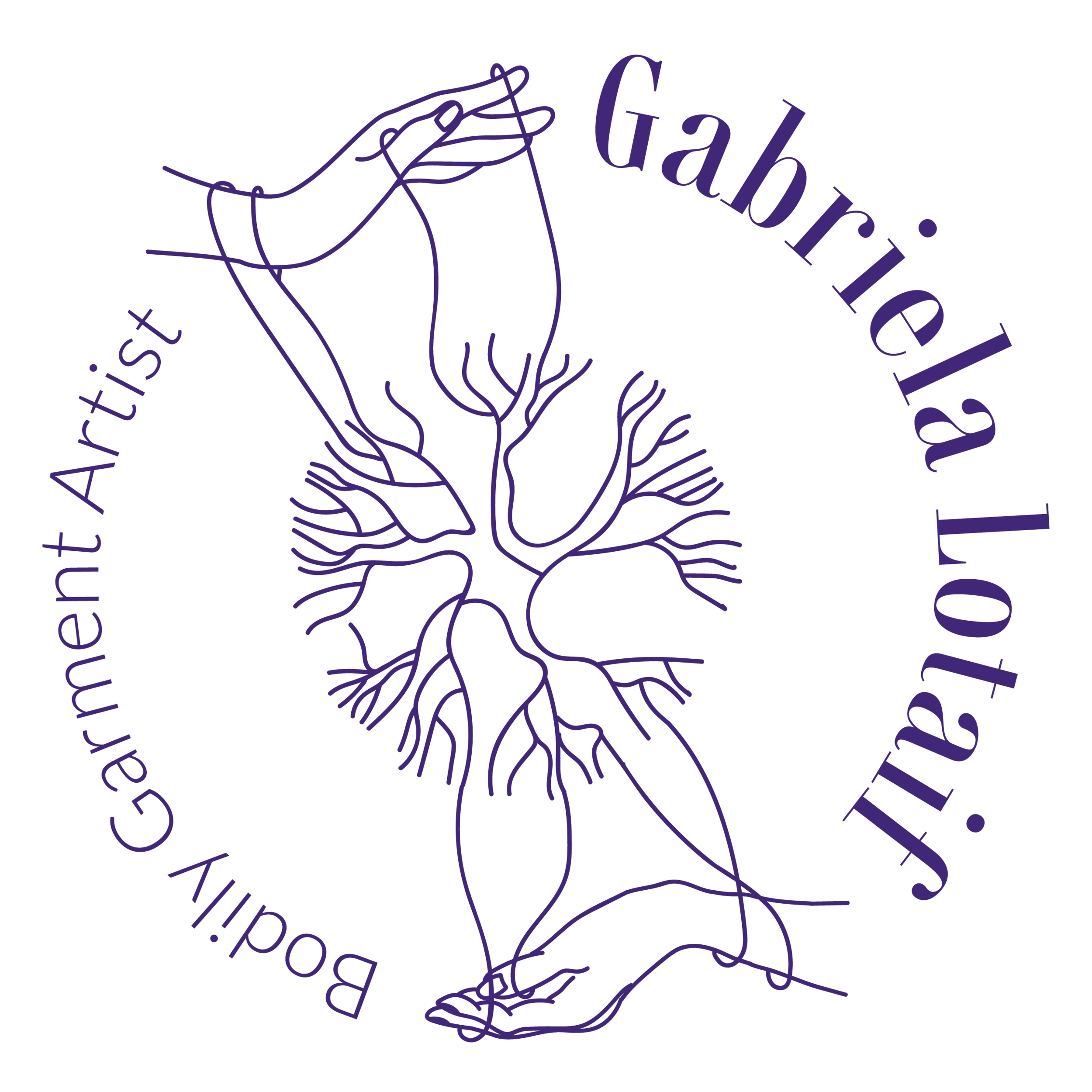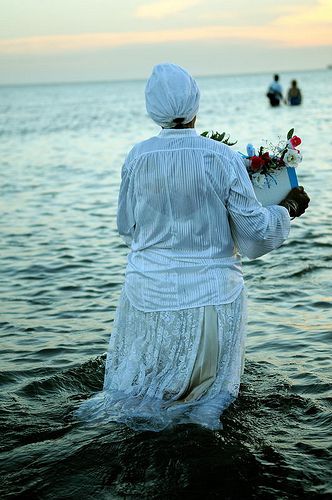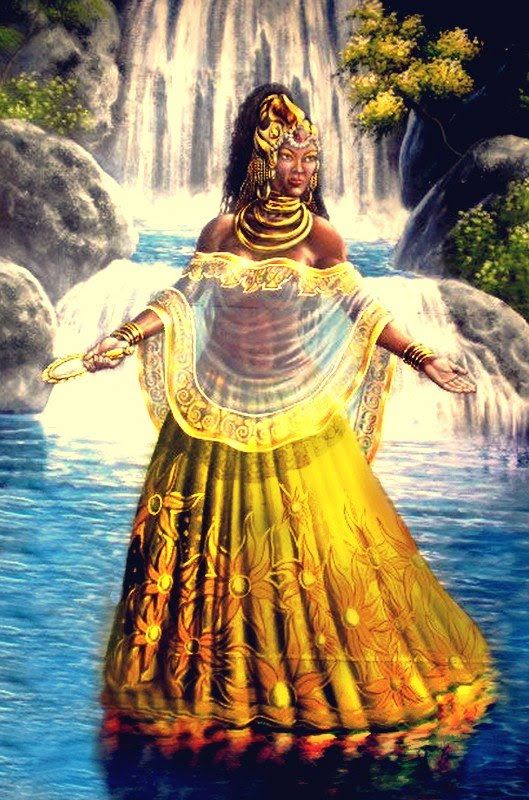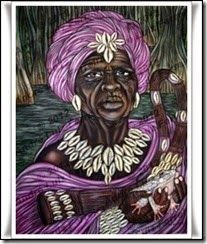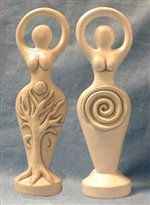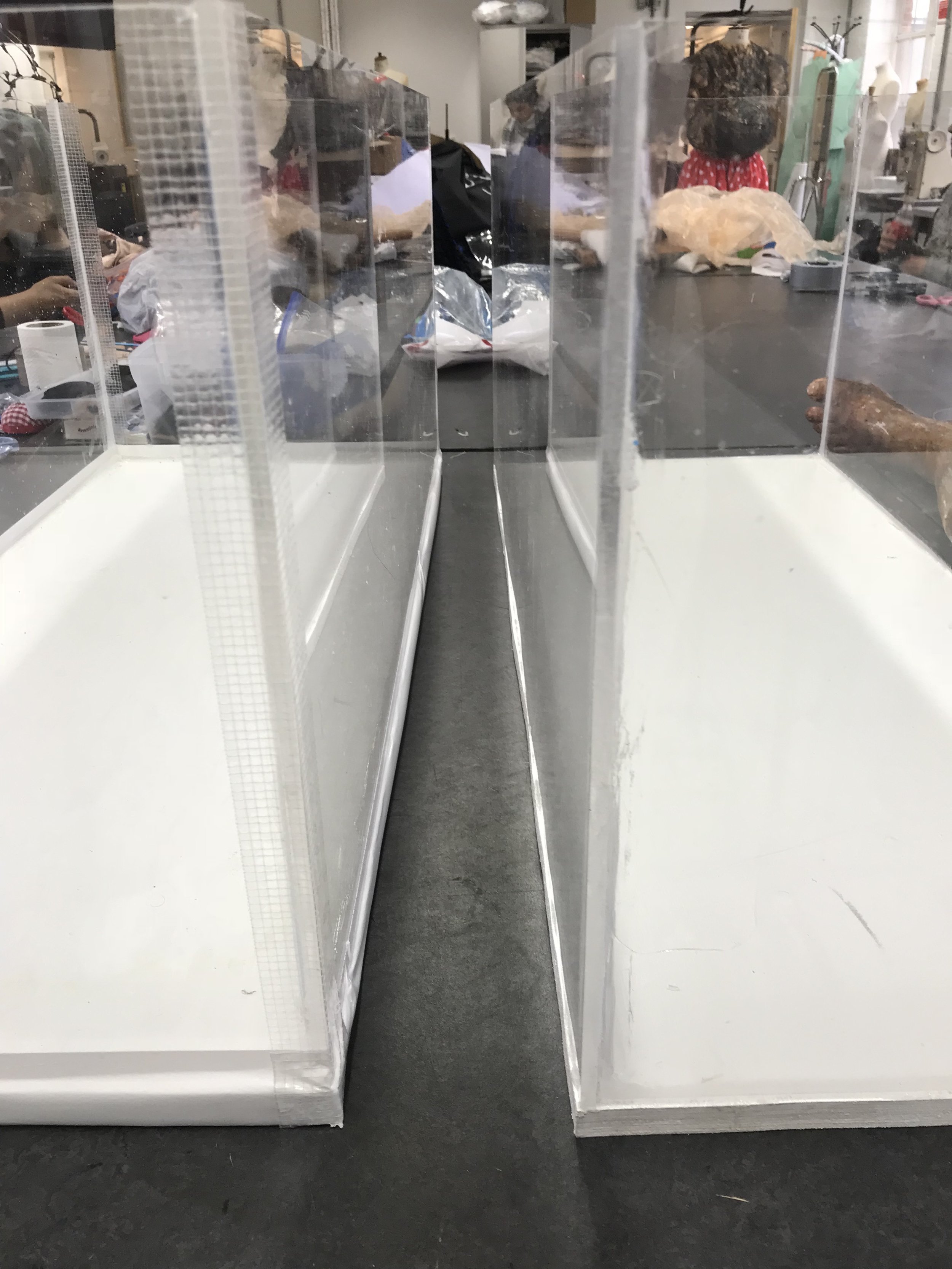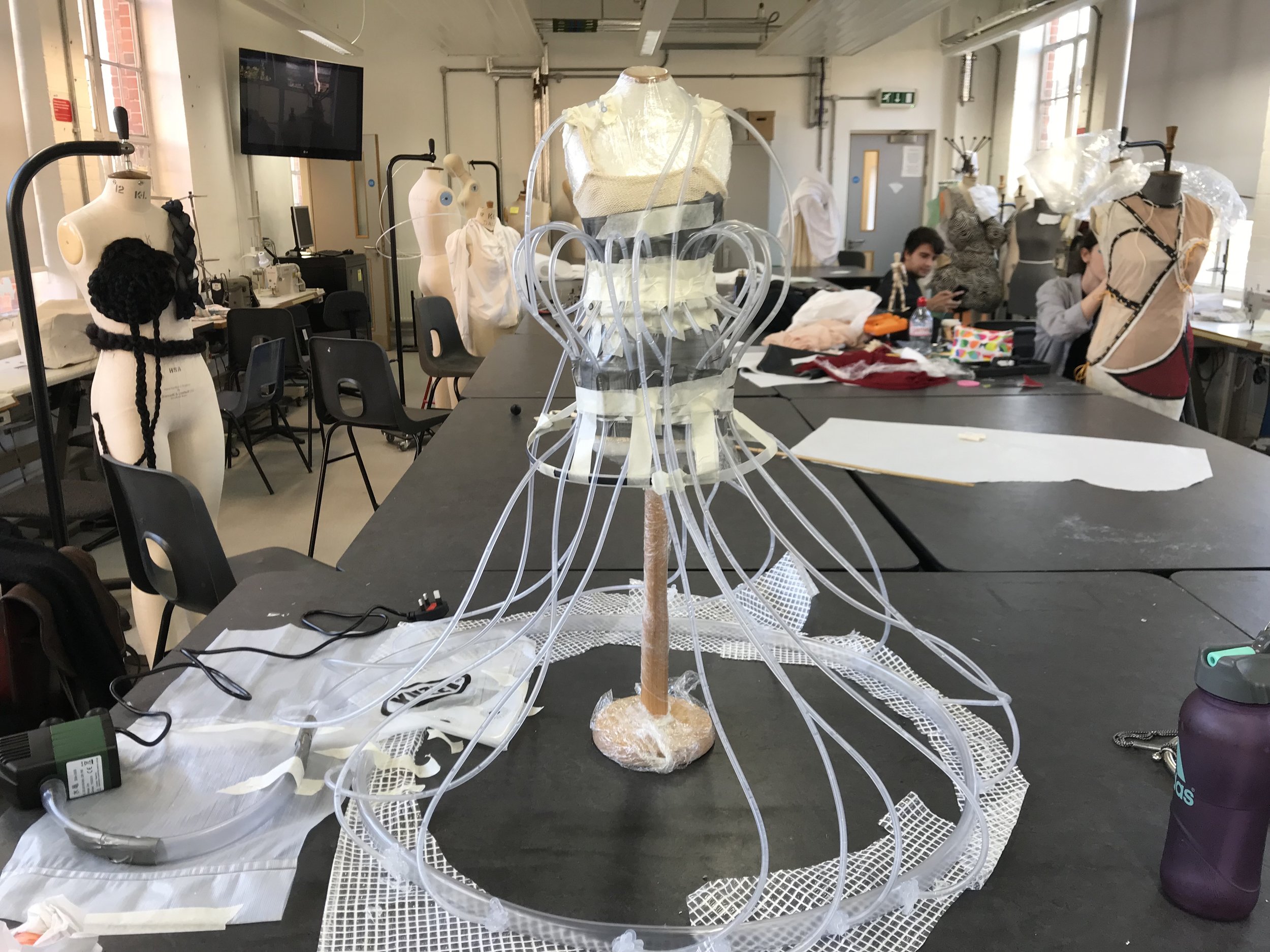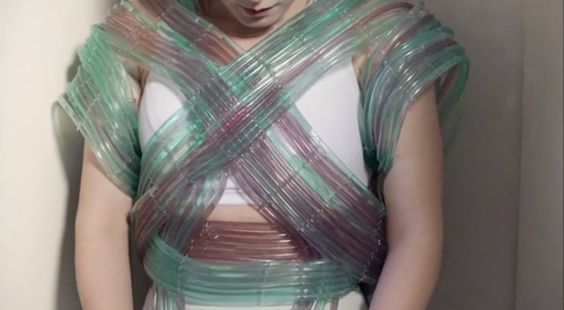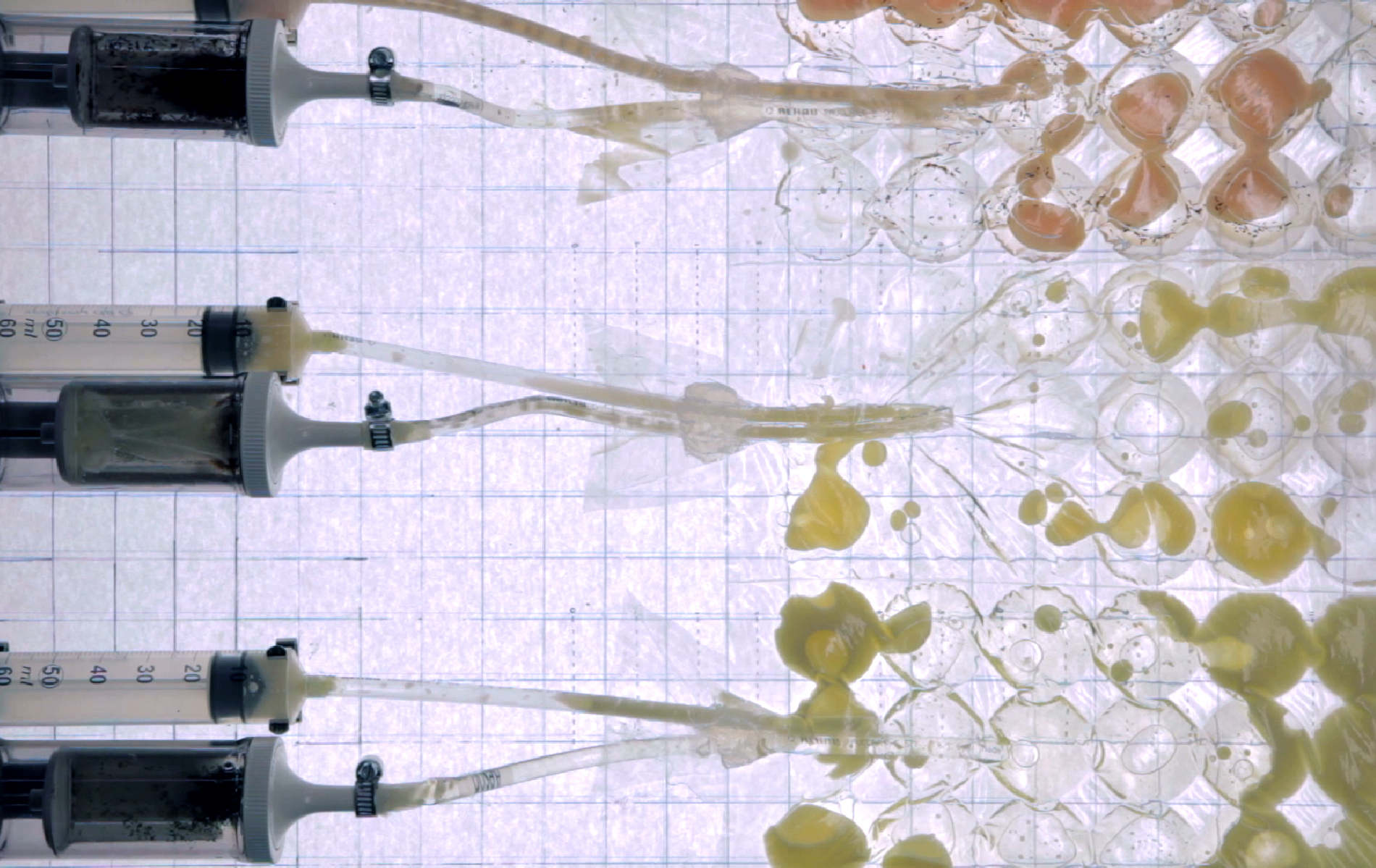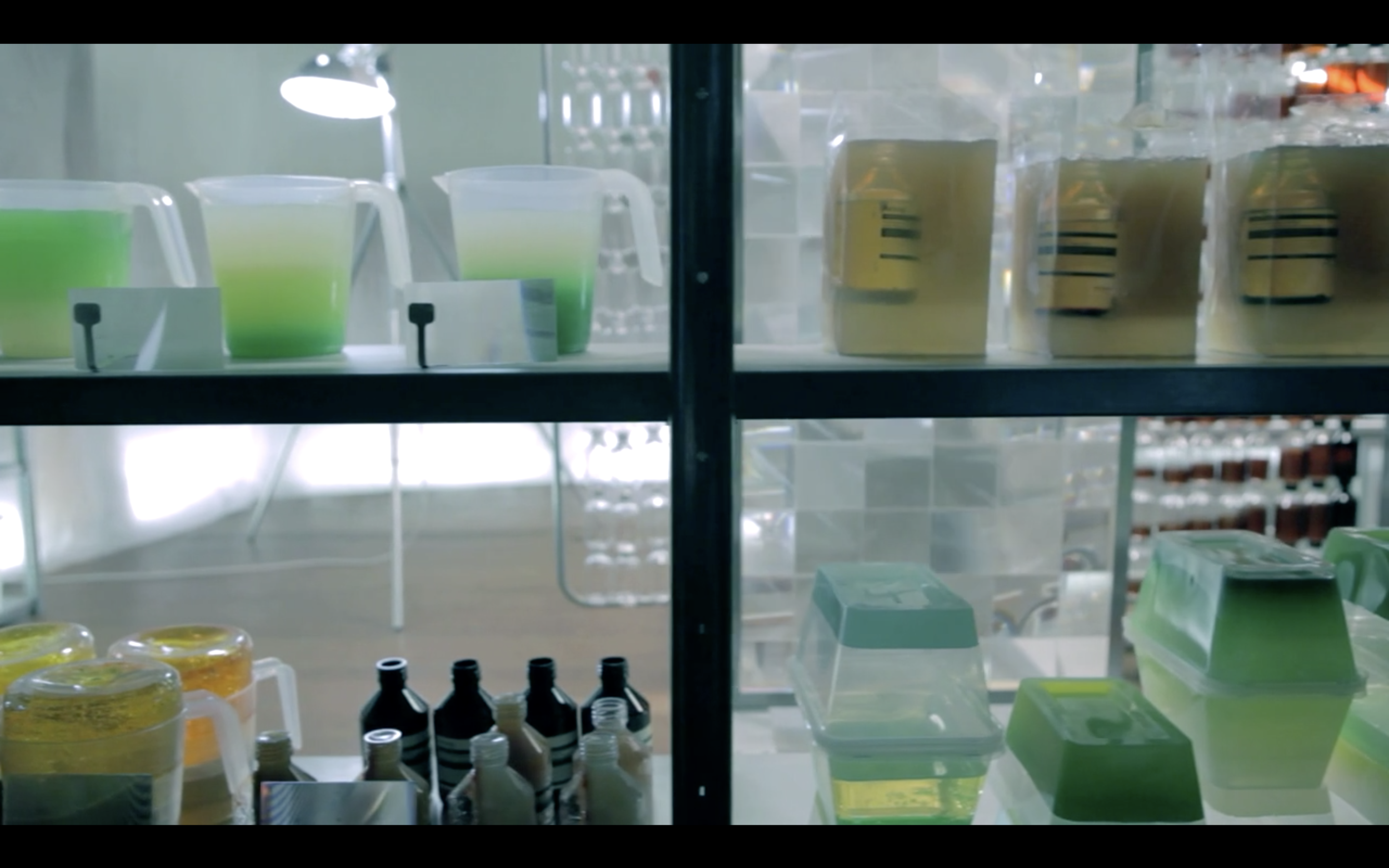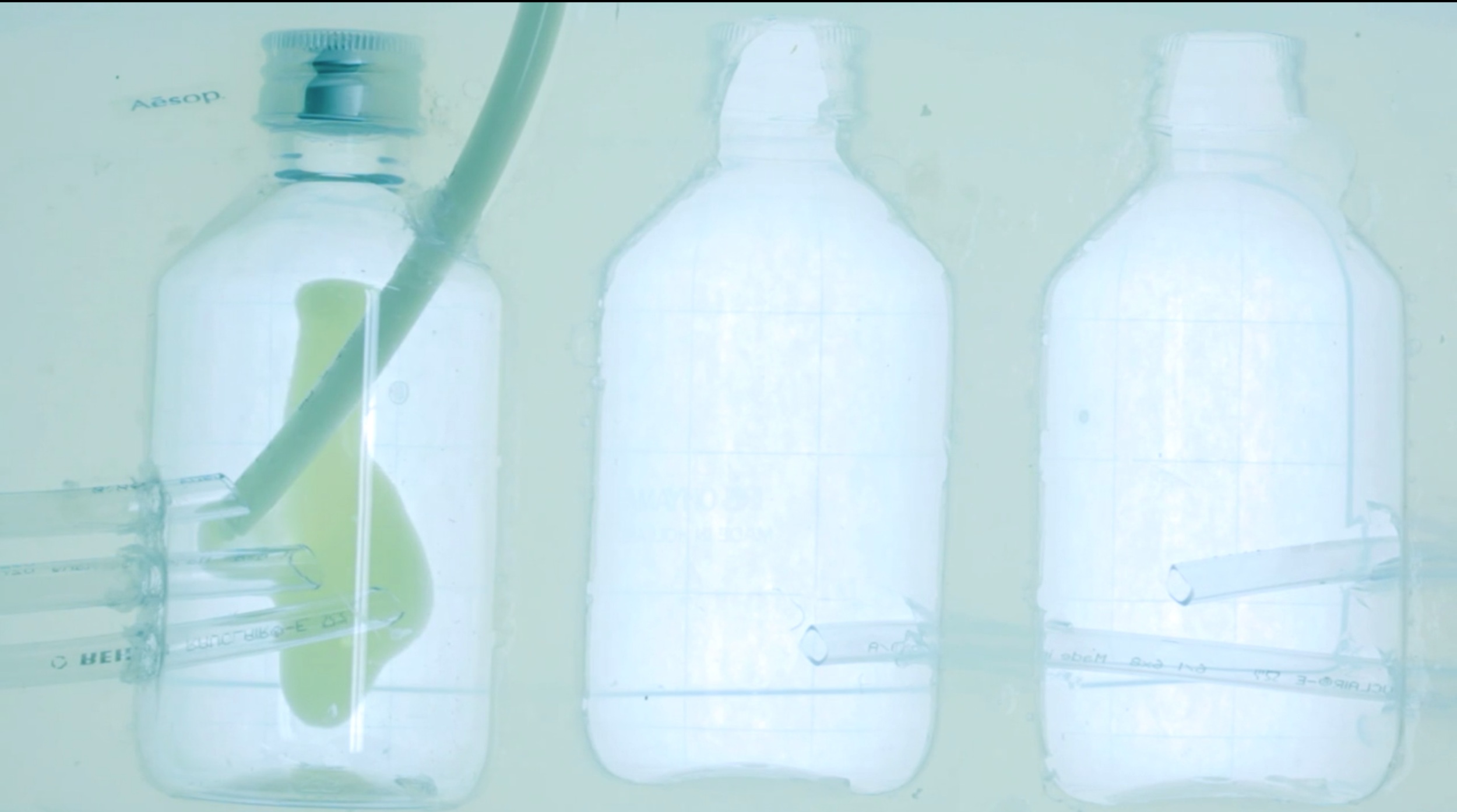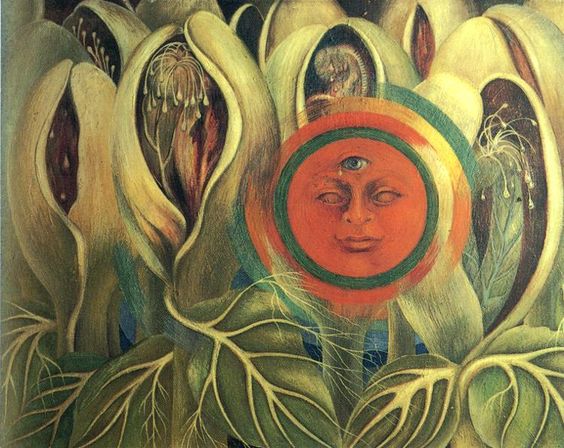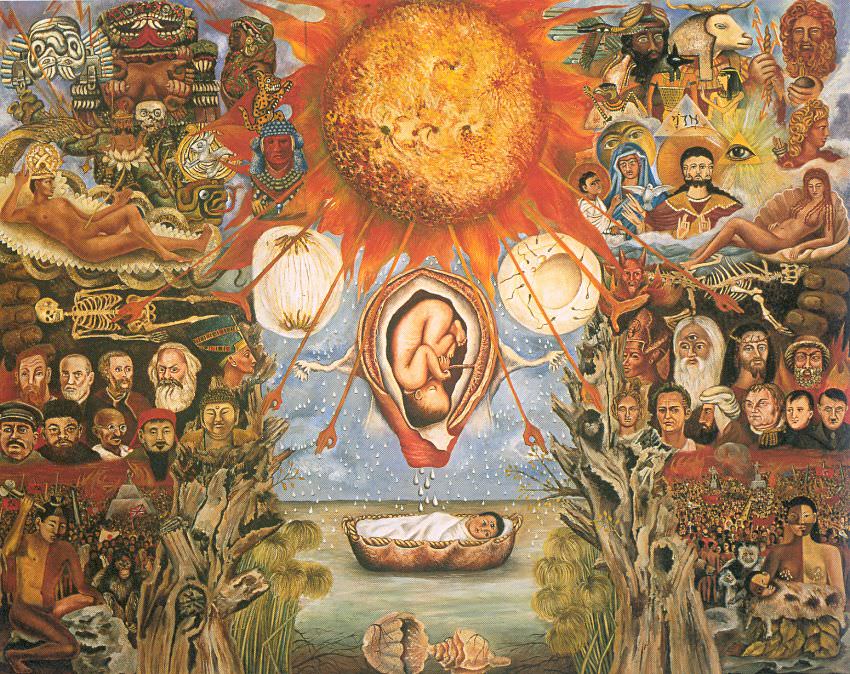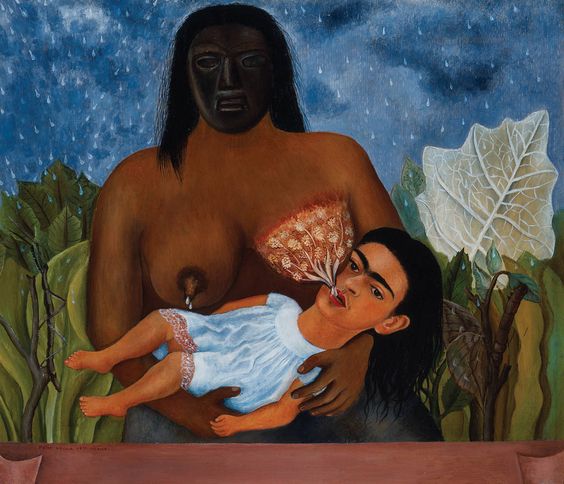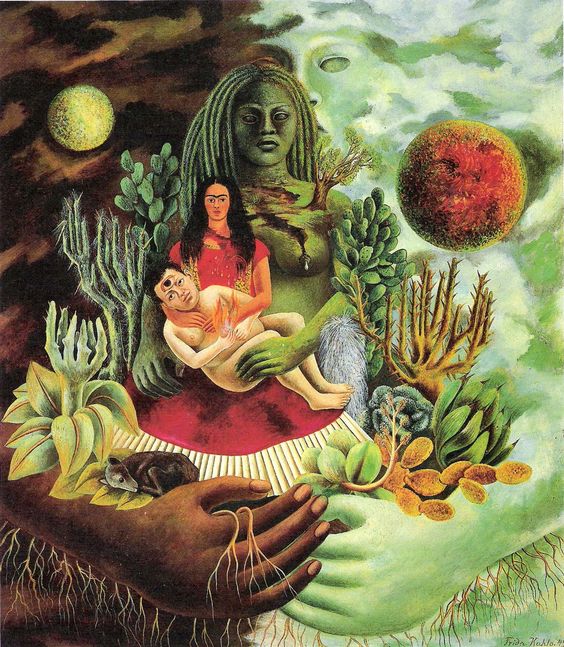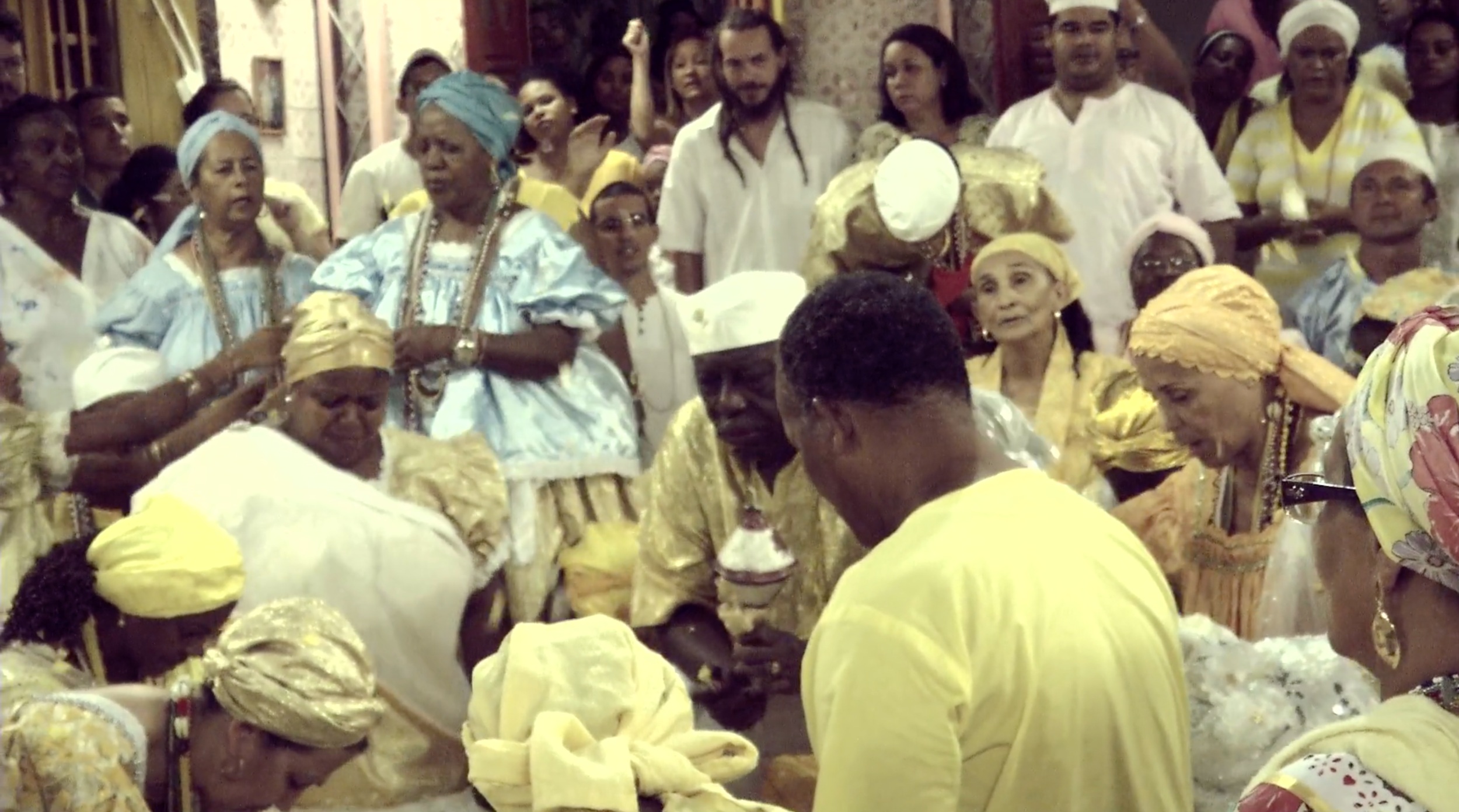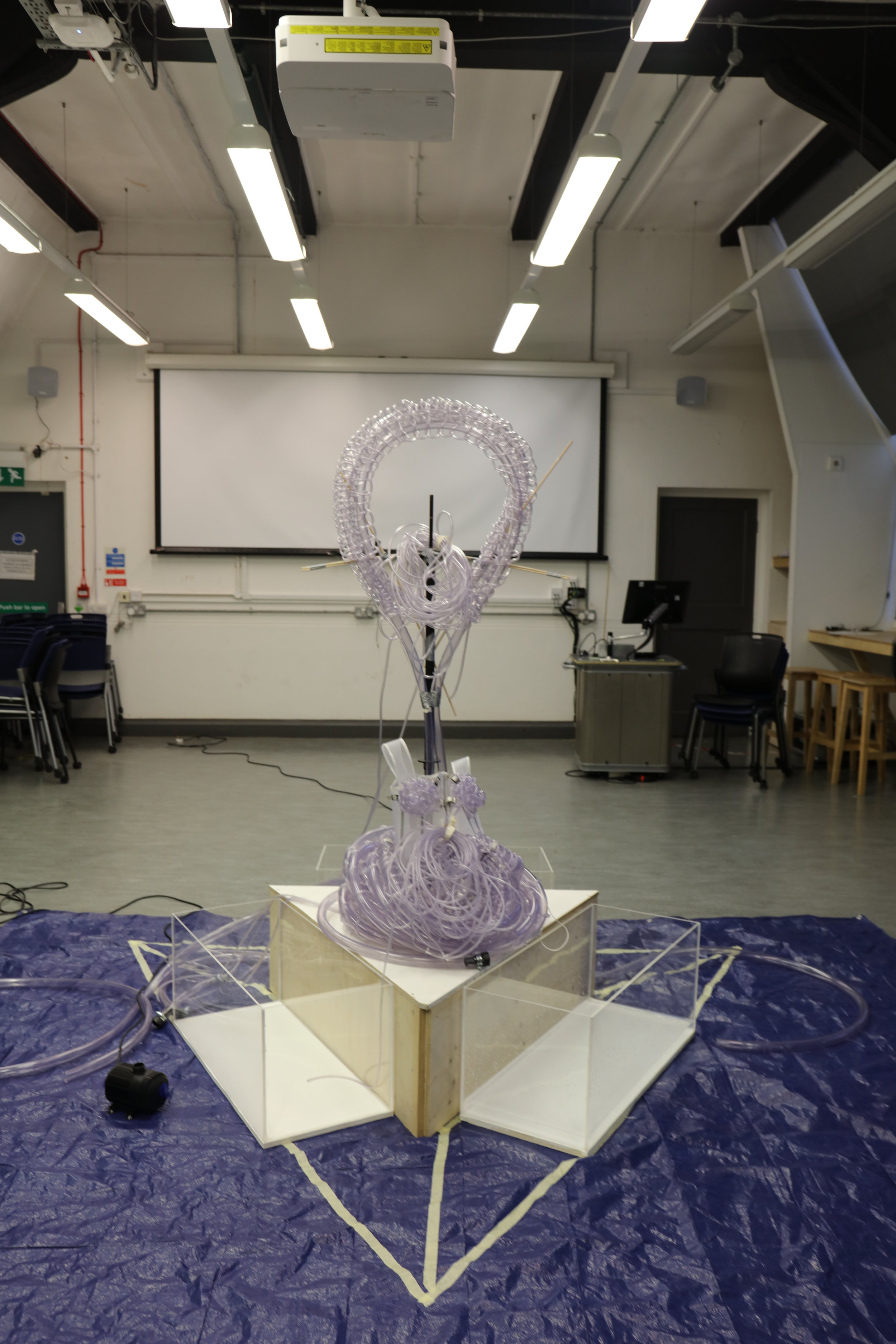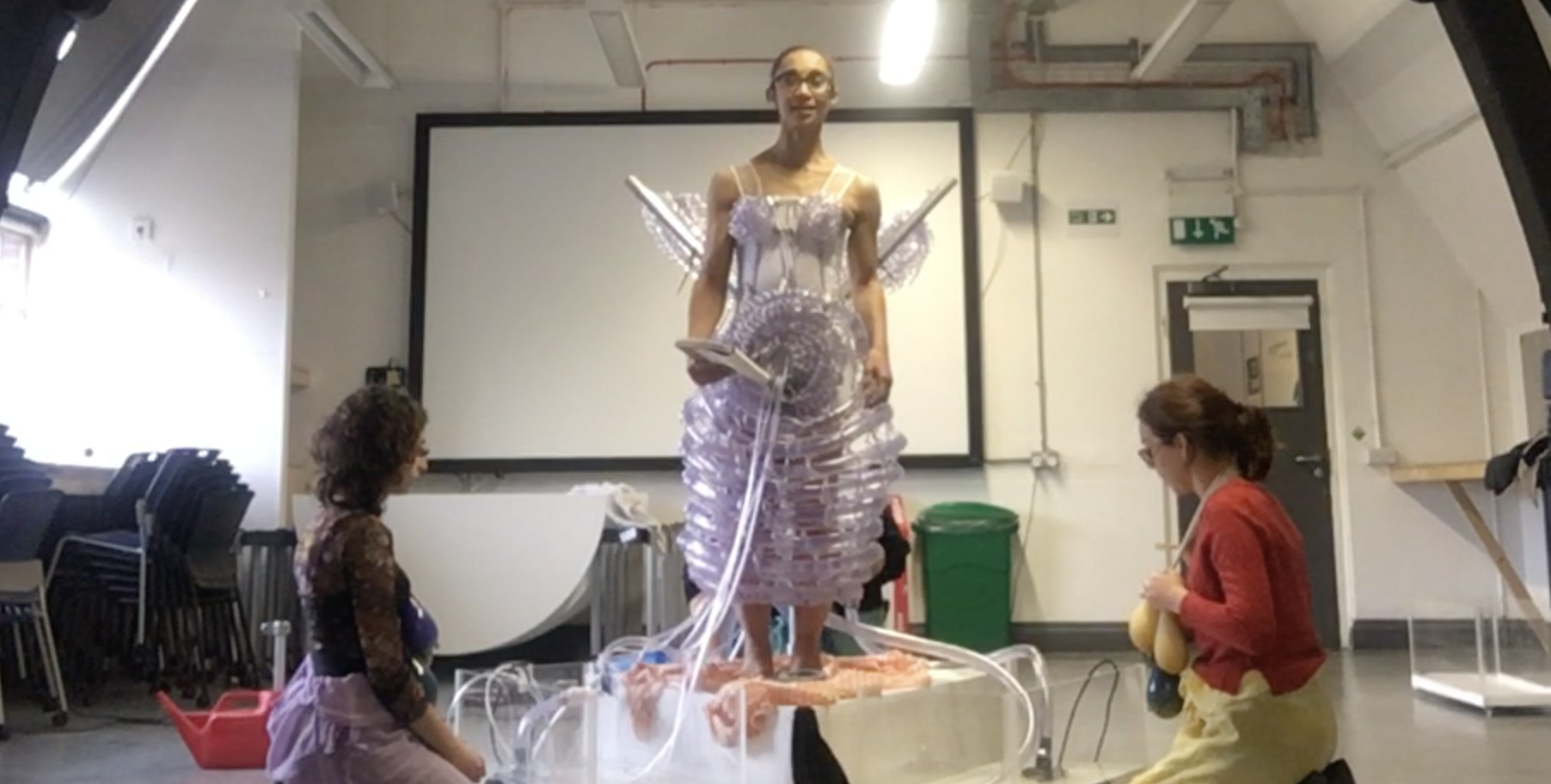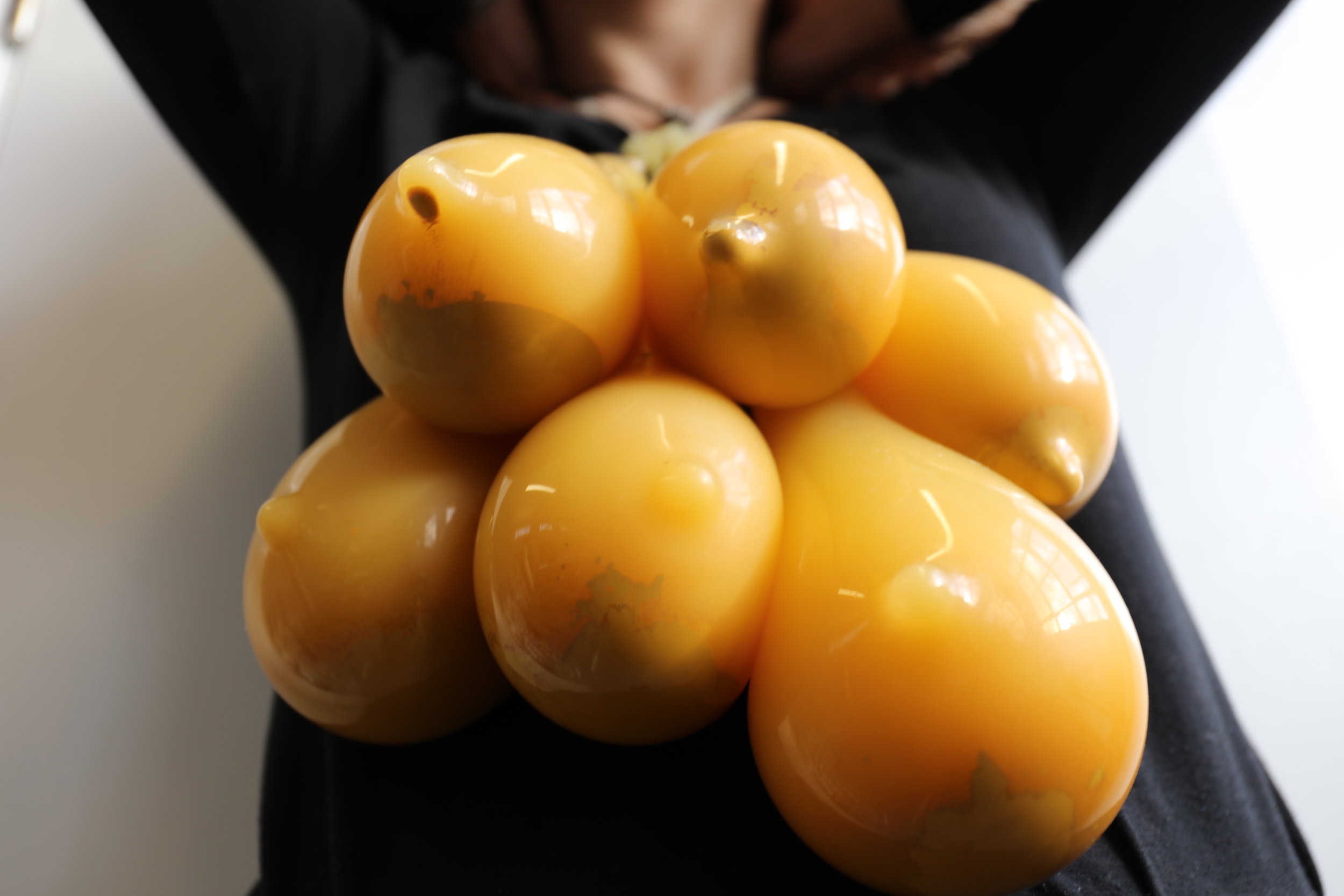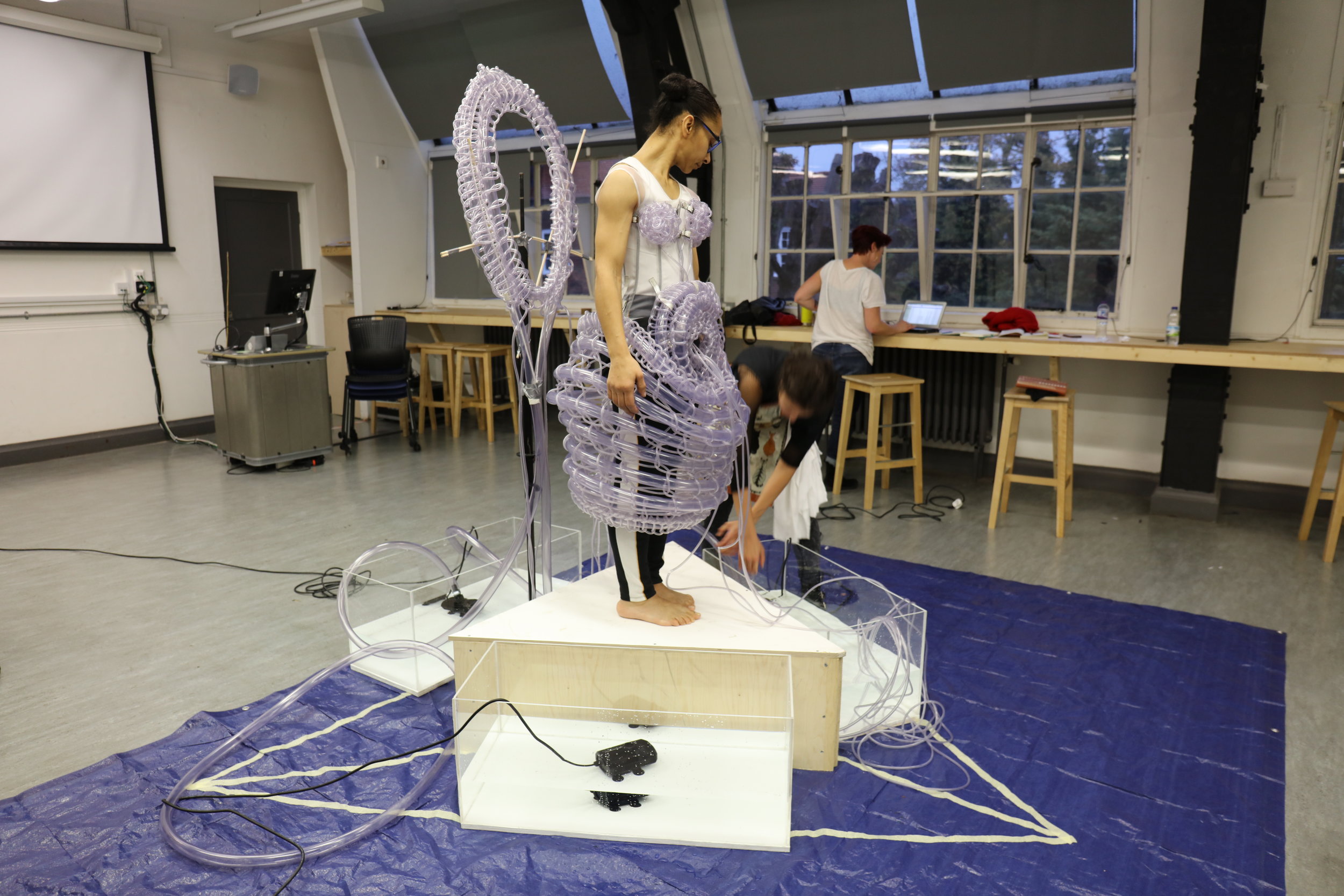MOTHER OF WATER
INTRODUCTION
Mother of Water is the title of my final project presented to the MA Costume Design for Performance at the London College of Fashion, University of the Arts London. This project consists of the design of a performance costume based on my choice of the theme “Water in Brazilian Folkloric rituals of fertility”, a development of my initial subject of Brazilian Folkloric tales and figures related to water.
My path to define a theme for this project began with the very raw starting point of using Brazilian Folklore as a study object to my costume. This was defined while thinking of my project proposal to present as part of my application to the masters when I still lived in Brazil. Once I was coursing the masters and started doing the Live Performance project I managed to create a mother earth figure for it inspired by the Amazonian rainforest. At this moment I realised that my thoughts in regards to Brazilian Folkloric heritage were directly connected to the idea of the country’s unique nature that was occupied by peoples of so many different heritages who ended up forming a new culture. My concept for the final project started at this point being moulded into an idea of an elemental nature typical of Brazil and how it is perceived popularly through Folklore. The second project on the course, a film costume, I made very texturally, which allowed me to experiment with many elements in order to create a tactile costume product. During this process I realised that I should embed to my final project the idea of experimenting with a specific element in order to mould the performing body, even if this element had to be transformed into a texture through empirical mechanisms.
Once I finally determined what the final project would be about, I analysed all my previous research in Brazilian Folklore and observed its tendency of relating mythical folkloric creatures to elements of nature. I decided, then, to use water as my element and choose my themed-figures from the whole of the Brazilian Folklore that was related to it. Surprisingly the quantity of myths, legends and figures in Brazilian Folklore based on water is immense. I listed all of these, researched each of their stories and concepts and narrowed it down to three female African-Brazilian religious figures who represent mothers of water, Yemanjá, Oxum and Nanã and were part of water rituals.
After having very instinctively chosen these divinities I started reflecting on why I thought they would be more suitable to what I wanted to achieve with my costume performance. I found that, to me, water is a symbol of fertility and I caught myself looking for the folkloric figures that would specifically use water as a tool to generate life. In addition to this I have also noticed that my temptation towards the use of water as a folkloric ritual by these figures actually had to do with the perception of water a spiritual element. Having researched on how water can be part of healing techniques and its effects on physical health through ancient medicine such as the native Brazilian, the Tribal ones in the central-west regions of Africa and certain shamanic societies, I decided to have Mother of Water be inspired by and performed as a ritualistic element on the body.
As soon as I had defined that my project would evolve around Water in Brazilian Folkloric rituals of fertility I realised the need of having this entire conceptual discourse of the water as an element of a ritual to fertility shown by my costume, meaning, it had to be worn by a person performing this ritual. Faced with the challenge of having water somehow be around a body I started discussing with my tutor, Agnes, about water cycles and how they can be recreated by humans using piping and pressure. The creation of my costume was directly related to the mechanism contained within it after this point.
The idea of the water cycle was finally added to my costume concept, since it was a form of conceptualisation of the ritual to fertility as a costume. Fecundity can only be obtained through water once the full cycle of this element happens on earth. From the immensity of the sea, water becomes the rivers and its branches, which then in contact with more humid environments become muddy and vaporizes in order to become rain and is then given back to earth, from where it will regenerate and restart its cycle. This same cycle can be related to the human cycle of being born, aging and dying and being buried and becoming part of earth again. Also, that exact cycle has always been an original aspect of the Folkloric figures I decided to work with, since Yemanjá is the Mother of sea water and the youngest entity, Oxum is the mother of rivers and waterfalls and the middle-aged one and Nanã is the mother of mud and rain and the oldest one.
Based on this entire process I have come to creating a costume that contains a water cycle within itself, is based on the Brazilian Folkloric figures of Yemanjá, Oxum and Nanã and aims to be part of a ritualistic performance celebrating fertility. What I intend to discuss through my performance piece around the costume is the way Brazilian Folkloric performance is done. I aim to demonstrate how to achieve a ritual to fertility using water not only as and outer object to the performer of the ritual, but actually surrounding her body, generating a harmonic cycle that allows her to perform this ritual more effectively.
CHAPTER ONE – Analysis and Interpretation
Establishing water as a symbol of fertility through its embodiment in the figure of the water woman on the costume “Mother of Water” has only been possible through the incorporation of the entities that inspired the costume on the first place. The ritualistic belief in their powers and actions has been engaged in the entire process of thinking of the costume.
These three divine figures are all from the African- Brazilian religion called Umbanda. This religion is a mixture of tribal African beliefs that resulted in Candomblé united to Christian beliefs brought to Brazil by the European peoples who occupied the country during its colonization period. This religious belief developed itself during the period in which slavery was yet legal in Brazil and has set its routes throughout the country’s area, especially in the Northeast region. Nowadays Umbanda is no longer only an African-descendant’s religion, it is actually one of Brazilian biggest religious powers and is also used as a ritual source to many believers in other religions who need a specific kind of healing in their lives. (Silva, 2005, p.26)
Yemanjá, as the mother of the Sea has her own specific characteristics that define her as the first and youngest of the water deities. She has the same wrath and reach as the ocean; she is as incontrollable as it; her actions are intense and not necessarily thought of; she is impulsive and attractive. Yemanjá tends to be depicted with most of her body exposed and has a very sensual figure. Usually ritualistic offers made to Yemanjá are made during the nightfall, since she is known to be more open and kind at that time, as the sea would also behave around dusk. For this reason, Yemanjá’s main colour is turquoise blue, the colour of the sea reflecting the sky right after sunset. In the dictionary of Brazilian Folklore Camara Cascudo defines this divinity’s biggest devoted: “Those whose lives depend on the sea or on love are devoted to Yemanjá” (Cascudo, 1972)
1. On the left: Yemanjá’s depiction. 2. On the right: Offering starts being made to Yemanjá in the state of Bahia, located in the Northeast of Brazil, during sunset.
Oxum is the water deity of the rivers and waterfalls in Umbanda belief. She reigns over rivers and waterfalls, where animals migrate to in order to mate, and along where most exotic plants grow. The land alongside Oxum’s area of action is always the most fertile land, where humans have historically built their homes in order to be able to grant their longer sustain. For these reasons, Oxum is depicted as a woman of 30/ 40 years old, the most common age of motherhood in contemporary times. Her main colour is golden yellow as she reflects the warmth of the sunlight on her surface. The ritual of body possession by Oxum is one of the most powerful possession rituals in Umbanda, she is taken to be the strongest female deity in the religion. (Cascudo, 1972)
3. On the left: Oxum’s depiction. 4. On the right: Ritual of embodiment of Oxum by her daughters and sons who receive the deity on their bodies through the use of rhythm and offers of food and drinks made to the entity, allowing their minds to go into a trance-like state.
Nanã is the grandmother amongst the water divinities in Umbanda. She acts over mud and rain. This deity is responsible to give back to the earth the life that water has borrowed from it once first formed as an element. She makes sure that the cycle is completed so that it can restart all over. The phrease “From the mud I come, to the mud I go” is her mark. Nanã is most often depicted as an older woman, but a strong and imposing one. Her colour is purple as it represents earthy brown together with watery blue (Bogushevskaya and Colla, 2015). The rituals to Nanã are usually connected to the concept of death and are always extremely gloomy, involve a lot of crying and have as main background sounds of desperation and mourning.
5. On the left: Nanã’s depiction. 6. On the right: Pose that the daughters of Nanã usually have when in rituals for her, facing the earth.
Once I had studied all the three deities in depth I understood that these figures were all mothers and symbols of fertility because they ruled over water. As soon as I had defined that it was them I wanted to use as my main inspiration I was immediately able to think of a way to create a costume that represented them and also embodied water as its element: I had to create a costume that somehow depicted the cycle of life and at the same time the cycle of water. This came to me quite instinctively, as the first thing I got out of my research on folklore was the fact that these three water entities represented the entire rotation of being; they covered the theme of fertility of the water and the use of it as a ritualistic element. Thus began my path into designing Mother of Water, a costume about female fertility that achieved its message through the use of water and water-friendly/ water-taming materials. I had the initial plan of creating both a moment of birth giving to the water with a burst created by one element of the costume (as I will explain more fully on my third chapter) and a subsequent moment of cycling of the water through the costume. These two moments would together represent the fecundity of the Mother of Water.
Having defined this main aim to my costume piece I then researched how water has been used in rituals and in healing in a more generic point of view, which led me to realise that despite what I used to believe in (that water was used for healing mainly in more holistic methodologies of medicine) water is actually greatly and vastly used as a cure element in many medical stands. Some examples of this quite therapeutic use of water include floating in a deep pool for and hour in order to relax the body and mind (Hutchison and Perry, 2017), not only drinking certain amount of water but also eating food that contains higher levels of water (Kavounas, 2000), Using water in skin medicines in order to have it reach the layers of the skin and rejuvenises them (Kavounas, 2000), sole therapy that is based on the crystalline structure of the salts contained in water (Hendel and Ferreira, 2007). This whole medical aspect of water has taken me into a quite laboratorial environment with my costume.
The Brazilian Folklore version to water has then been complemented with the laboratorial approach to water as a healing element. The result of this mixture was the use of materials through which I could actually create a small environment that somehow exists on its own as a rather pharmaceutical water cycle to be worn. After suffering the ritual of colouring the water with the three Brazilian entities’ colours the cycle then becomes the silhouette of the Mother of Water. Fertility in water is in both performance moments the main theme; this is why I have chosen to create the costume in the shape of iconic female fertility sculptures.
7. Female fertility sculptures.
Considering the water cycle I hoped on creating with my manipulation of materials I decided, from a very early stage, that the paramount material to my design would be transparent and somewhat mouldable water hoses. Transparency was needed because of the idea of colouring the water going through the costume with the deities’ colours. After experimenting with different ways of attaching the tubes in order to create a garment with them and studying how much the water pressure created by the pumping of the water actually affected my possibilities of manipulating the tubes (this would make the water flow on the cycle) I came up with the idea of using the manual technique of macramé with smaller and larger tubes being knotted together.
8. Macraméd shape based on female fertility sculptures.
After this stage I had to refer back to my research in order to create a base to my costume where I could contain the water to be pumped onto the cycle and also plan how the colouring of the water would be done. This is the moment at which the more medical view of the water cycle was very helpful, I could through several inspirations, including visual ones as two films by by Lucy McRae, Morphe and The Making of Robyn's 'Indestructible' Music Video (Lucy McRae, 2018) think of how I would like the water tanks to look like. Since they would be three separate ones, each for one deity’s colour, I have also decided to make her altar in the centre of them in a triangular shape that helps establish the costume as an esoteric one.
9 and 10. Water tanks that will contain the three water sources for the pumps connected to the costume’s cycle.
11. Triangular base surrounded by three water tanks, on on each of it’s walls.
CHAPTER TWO - Contextualisation
As I have mentioned on the previous chapter, Lucy McRae is one of my main sources. Alongside her I have been deeply inspired by Frida Kahlo and her constant questioning about fertility and womanhood both in life and in her art. A third extremely important group of artists called Híbridos, who collect images of Umbanda’s rituals in a very poetic series of films, has influenced me.
Other sources I have referred to in my research on how water was interacted with in a performance were Dimitris Papaioannou’s 2008 Medea, Florence and the Machine’s video clip for “Big God” choreographed by Akram Kahn, Pina Bausch’s Vollmond, Bill Viola’s constant water-themed productions, Fuerza Bruta’s Wayra (specifically the moment containing water) and Olafur Eliasson’s Model for a timeless garden. These sources were, however part of my research on how to create performance using water as an element and their approaches were all external to the performer’s bodies, when there were performers. They have only been helpful to me in the understanding of how water behaves when in contact with the body and once manipulated in different ways through different procedures.
Lucy McRae’s work was not only an inspiration as to the whole pharmaceutical atmosphere of the water tanks, it was also because of her costume designed for the “indestructible” Music Video by Robyn that I have actually managed to understand the most important one of my limitations when it came to working with water inside tubes: if they are somehow designed as a complete cycle the water pressure functions much better. My first experimental attempts of putting a dress together from the transparent tubes after having made my first designs of this garment failed exactly for the reason that I had too many intersections at which the water pressure created by the pump showed itself as a problem, because all the water would be directed to the first few intersections coming from the main tube as in the image bellow.
12. First small size experiment base on my initial designs for the Mother of Water’s costume.
I then referred to Lucy McRae’s top made for Robyn on her Video clip Her methodology of using one full cycle made by a very long tube was the one I decided on using for my final design and in its making.
13. Image of part of Lucy McRae’s tube top designed for Robyn’s music video.
The visual ambience I have based my costume’s supporting structure on is also very influenced by other works signed by Lucy McRae, especially one she has developed in collaboration with the cosmetic brand “AESOP” called “Morphe”. She tends to use quite a lot of white together with transparent surfaces in her pharmaceutical looking films as the one shown on the image bellow. She also uses very streamlined looking materials that either resemble or are actually from the medical industry. My designed costume with its tubes connected to the pumps inside the transparent tanks transmits, very similarly, a laboratorial feeling to the audience. This feeling is then replaced by the emotional approach to fertility that is engaged once the colouring of the water happens, but it is the starting point of the performance and thus one of its leading aspects.
14, 15 and 16. Images from “Morphe”, a video by Lucy McRae commissioned by Aesop.
Frida Kahlo, less practically has actually led me to the main approach I assumed towards the Brazilian Folkloric figures of Yemanjá, Oxum and Nanã: Reading them as symbols of water’s fertile nature. It was through observing the Mexican artist’s work, reading a lot about her life story both in literary and biographic versions, going to several art exhibits containing her productions and the recent V&A exhibit of her wardrobe that the notion of women containing within their power of reproduction what could be seen as a lifecycle came to me. This understanding of the female body’s innate preparation to be fertile and to contain a cycle has then led me towards the comprehension of a parallel between the three water deities in the African-Brazilian religion of Umbanda and a central Water Mother who is the cycle of water and because of this is also the cycle of fecundity just because she is woman and she is elementarily water fertility.
Frida Kahlo’s early tram accident has led her to many life-risking operations and posteriorly to numerous after-effects that were directly connected to her fertility. Frida has subsequently had two baby losses. (Zetterman, 2006) (Espinoza, 2007)
This whole situation is clearly what has inspired her to create works of art such as the ones shown below. In these paintings the discussion of female fecundity and what power it has over a woman’s social and feminine existence is clear. This discussion is the same one I aimed to raise throughout the performance costume I have designed for this project. Using the concepts of the three Brazilian Folkloric Water divinities, my intention creating a water cycle costume was elevating the figure of it’s performer to the same level as the figure of Frida Kahlo in her paintings: a figure that converses the fact that women are naturally fructiferous as many other elements of nature also are. This figure is also put in a position of power in terms of how necessary she is to the actual happening of the life cycle. Women in Frida Kahlo’s work are nature’s gifts to procreation and without them to host that entire cycle it cannot happen.
17. On the left “Sun and Life”, 1947. 18. On the right “Moses”, 1945. Both artworks by Frida Kahlo.
19. “Roots” by Frida Kahlo, 1943.
20. On the left “My Nurse and I or Me suckling”, 1937. 21. On the right “The Love Embrace of the Universe, the Earth (Mexico), Me, Diego, and Señor Xolotl”, 1949. Both paintings by Frida Kahlo.
Híbridos, in its turn has been my reference to the feeling of the ritual to the water deities in Brazil. This collective of artists focus their work in films of the many different festivities and ritualistic events within the religion of Umbanda. They capture very artistically and quite appropriately with their filming techniques what the feeling surrounding and Umbanda gathering is. In this religion there are many different approaches to spiritual incorporation and their rituals happen in specifically related ways to what the spirit being embodied is. When it comes to the three water goddesses, Yemanjá, Oxum and Nanã, their rituals have always mainly women in its midst chanting together in order to summon up the spirits. Not only do the women sing, they hold each other and rock themselves to the rhythm of the song. There is sweat, emotion and communal exchange in these rituals; a band plays a quite taking beat. The participants enter a state of trance, very thoroughly captured by the lenses of Híbridos. The group has a particular way of filming that induces the rhythm of the ritual. This quite emotional approach to film making of the rituals is an approach I have been inspired by in two ways: one is in order to understand that the collective of women surrounding the main Mother of Water was essential to making the performance costume become a ritualistic garment and not only be perceived by its audience as a laboratorial piece.
The second one is to define what exactly I wanted to produce as a film addition to the wearable performance piece. It is because of Híbridos that I have been able to imagine my costume not only as an installation being performed live, but also as one that allows moments of close ups and detailed films of what happens on the costume to be projected on its background. These projections would aim to enhance the audience’s experience and give them the impression of a ritualistic relationship between performers and water happening through the use of the costume. They would be filmed using techniques employed by Híbridos that can be recognised as rather human ones, for example filming with the camera on free hands, trying to run the lenses through what is happening on the scene as someone would do with their actual vision, mixing close ups accordingly to the rhythm as the human brain could actually do and so forth. (Hibridos.cc, 2018) The video I have mostly referred to is one of a small ritual of embodiment of Oxum, in which the believers being filmed have an extremely compelling posture towards the ritual itself. (Terreiro Xambá. Hibridos.cc, 2018)
22. Image taken from Terreiro Xambá of a ritual for Oxum.
CHAPTER THREE – Practical considerations
During the three rehearsals and especially over conversations with Jennifer Irons, the choreographer and director of the performance and Maria da Luz Ghoumrassi, the performer, I have observed that always when thinking about how to create the character’s interpretation all three of us would refer to our own mother’s behaviour towards us and they both would also refer to how they are as mothers. This has been essential to bringing to the piece a rather emotional-memory based atmosphere that very efficiently relates to all my inspirations. This technique has been responsible to making the piece emotionally representative of motherhood and it’s connection to the actual image of women through the use of water. We have discussed a lot about how cleansing was used by mothers differently as either rituals (putting the children to sleep after a bath with lullaby soundtrack on the background), punishment forms (washing children’s mouths with soap after they did something wrong), healing (having children drink of the calming water in order to stop them from crying of tiresome). This discussion came up in every one of the rehearsals and has been extremely meaningful to me in planning the performance within the costume and how the audience would perceive it.
The rehearsals have also been key to certain choices I made regarding the costume, such as pointing the altar towards the audience to create an arrow dynamic between audience and performance, similarly to a ritual. During them I decided to fix the halo of the costume to the altar so that it represented the innate adoration of the central performer and contextualised the altar rather as part of the costume and not only the performance.
23. Picture of how the assemble of the costume looked on the second rehearsal with the altar pointing to the front and containing in it a support to the halo.
During the earliest rehearsal it was again together with Jen and Maria that I decided to have more than the main performer on the stage, and actually have three other women paying that central figure a ritual, as this made sense to the piece and its intention. This addition of supporting performers added to Maria’s position as the central figure the idea that she was the unity of the three goddesses and therefore the depiction of the Mother of Water and the entire water-fertile cycle that can only be complete once the three entities and their water elements are put together into one large picture of the cycle.
24. Image taken from film of third rehearsal with the three supporting performers making their offering to the Mother of Water.
It was also on rehearsals that I have sorted my issue with the birth of the water. Since the beginning of my creation I wanted the “water placenta” structure to be part of the main costume. Only during rehearsals I realised that it should actually be part of three supporting performers’ costumes. This was my biggest discussion in terms of my approach to fertility and how to make the costume work and seem harmonic from the initial moment of my making the costume. I had always planned to have two different manners of interacting with water through my costume: one would be the burst of the water that would represent the moment of birth by the Water Mother, the other one would be the cycle of that water that was given birth to. Once I started making the costume I realised two main things that kept me from having these two moments in the actual garment worn by my performer. The first was the technicality of having a burst happening somewhere around the performers waist and needing to direct this burst to the tanks from which the pumps would create the water cycle. The second was the extreme difference of impression caused by the look of the water cycle created by tubes being macraméd together in comparison to the look of the soft, shaking feeling of whichever material that I would use that could contain water for some time, look almost like a placenta and behave in a rather ‘balloon-filled-with-water’ way and be popped in order to create the burst. Before the start of the rehearsals I actually managed to find a material I was happy with for the bursting moment, after testing with certain transparent water balloons and plastics I could make a water blob from: I used condoms that behaved exactly as the placenta like texture I wanted to have and actually shaped themselves as breasts once filled with water. I had also decided that the colouring of the water, that I still had to figure out how would be put on the water, would actually happen on the moment of the water burst and thus be contained on the condom-made water breasts. I had not yet, nonetheless, figured out how to add this water colouring burst to the costume that looks so much more as a structural piece. It was explaining about the rituals and how female they were and how strong they were taken because of the group of women (mainly) performing them in reality that Jen asked me why the breasts could then not be worn by other three performers, each carrying one colour representative of one deity that would make the whole piece seem much more as a ritual. I then decided to go for this and create three new garments, simpler ones that would be the ones for the three supporting performers. This has allowed me great clarity when it came to how to realise and finalise my design ideas of the main costume and I have, because of this decision been able to create it as a water cycle that is coloured and represents life cycle in a very female visual.
25. On the left: image of water breasts being worn by supporting performer. 26. On the right: Image of main performer, Maria, wearing her costume, the water cycle made of tubes that gets coloured during the ritual.
CONCLUSION
Creating a costume-centred performance was a completely new experience to me, and as it usually is with new experiences it has also been a great challenge and a quite bumpy process. This challenge came in many ways during the creating, making and rethinking of Mother of Water. It has been new and complex to deal with water, a very live and particular element that reacts more than anything to gravity and pressure. Managing time and its limitations during a project that allows me, as a costume designer to be as creative as I will has been most problematic, as I would have loved to have been able to extend my experimentation further. A third big obstacle I had to overcome on my process was to think the costume as a performance container, that would on its own already dictate certain possibilities and limits to its performer, especially considering how heavy water is and how limited the performer became once I decided to plug her costume into pumps that had to be located on water tanks.
Now that the project is nearly finished and the performance is about to happen, however, I put into perspective how the above-mentioned limitations have impacted on my costume. I realised that they actually led me to more efficient path in creating the costume piece. I had to adapt my costume to its performance in certain points and the performance has had to be designed to my costume in most ways, this process is unique for a costume designer and has given me the ability to consider the performance within a costume much rather than the costume most suitable for a performance.
Mother of Water has taught me how to manage a very hard element that has a life of its own and it’s particularities into my design ideas. It has given me the competence to adapt my creation to its performing needs and still have in mind what the main aim of my piece is. This piece has also given me the will to explore more with water and several other natural elements in costume designing in order to achieve an exchange between human and wearable elemental nature. I understood how important to me it is to work with a human-based vision when making costumes and how much this can actually bring life to the costume even before the performer wears it. The performance then somehow becomes an experimentation of the costume by the performer following the lead of the director.
Time and venue limitations have kept me from realising the entire performance potential of my costume, as I have stated on chapter two of this document. I would have wanted to make it an installation piece that would include filmed details of it and could be perceived by its audience in a rather timely way. I have managed to plan most of the installation piece as it would be in order to induce the installations’ viewers to a more complete understanding of the costume’s inspirations and include this plan on my portfolio. My next step now is to actually create the supporting films as planned and put them together into a ritualistic Water costume film.
The cycle of water is intrinsic to womanhood and female fertility and the possibilities of showing it through costume are immense. Through Mother of Water I have managed to tackle a small portion of them and create a ritual to the Water Mother that can still become an entire depiction how water and women correlate.
SOURCES
Books
Bogushevskaya, V. and Colla, E. (2015). Thinking colors. Newcastle upon Thyme: Cambridge Scholars Pr Ltd.
Cascudo, L. (1972). Dicionario do folclore brasileiro. Rio de Janeiro: Ed. de Ouro.
Evaristo, C. (2017). Poemas da recordaç̧ão e outros movimentos. 3rd ed. Rio de Janeiro: Editora Malê.
Fuentes, C., Freeman, P., Kahlo, F. and M. Lowe, S. (1995). The diary of Frida Kahlo. New York: Harry N. Abrams Inc.
Hendel, B. and Ferreira, P. (2007). Water & salt. Switzerland: Michaels Verlag.
Hutchison, M. and Perry, L. (2017). Book of Floating. Nevada City, CA: Gateways Books & Tapes.
Kavounas, A. (2000). Water. London: Kyle Cathie.
Kisuule, V. (2017). A recipe for sorcey. Portishead: Burning Eye books.
Kisuule, V. (2014). Joyriding the storm. Portishead: Burning Eye Books.
Roddick, A. (2004). Troubled water. Chichester: Anita Roddick Books.
Silva, V. (2005). Candomblé e umbanda. São Paulo: Selo Negro, p.26.
Wilcox, C. and Henestrosa, C. (2018). Frida Kahlo. London: V&A Publishing.
Articles
Espinoza, J. (2007). Frida Kahlo's last secret finally revealed. The Guardian. [online] Available at: https://www.theguardian.com/world/2007/aug/12/artnews.art [Accessed 20 Nov. 2018].
Griffiths, J. (2018). Frida Kahlo: a life of hope and defiance. The Guardian. [online] Available at: https://www.theguardian.com/artanddesign/2014/mar/26/frida-kahlo-life-defiance-jay-griffiths-novel [Accessed 20 Nov. 2018].
Zetterman, E. (2006). Frida Kahlo's Abortions: With Reflections from a Gender Perspective on Sexual Education in Mexico. Konsthistorisk tidskrift/Journal of Art History, 75(4), pp.230-243.
Websites
Hibridos.cc. (2018). Híbridos - Rituals. [online] Available at: http://hibridos.cc/en/rituals/ [Accessed 24 Nov. 2018].
Hibridos.cc. (2018). Híbridos - Terreiro Xambá. [online] Available at: http://hibridos.cc/en/rituals/xamba/ [Accessed 24 Nov. 2018].
McRae, L. (2012). Morphē Short Film for Aēsop. [video] Available at: https://vimeo.com/49304150 [Accessed 28 Nov. 2018].
McRae, L. (2010). The Making of Robyn’s ‘Indestructible’ Music Video with EXTRA FOOTAGE. [video] Available at: https://vimeo.com/16376731 [Accessed 28 Nov. 2018].
Images
1. Umbandasaber (2017). Yemanjá. [image] Available at: http://filhadepombagira.tumblr.com/post/163253565270/umbandasaber-umbandasaber-umbanda-ax%C3%A9 [Accessed 25 Nov. 2018].
2. Cipó, R. (2015). Festa. [image] Available at: http://olhardeumcipo.blogspot.com/2015/09/janaina-grasso-nao-e-descolada-marie.html [Accessed 28 Nov. 2018].
3. Oxum. (n.d.). [image] Available at: https://i.pinimg.com/originals/90/c6/89/90c68961c4948f18197e742568e4a0fe.jpg [Accessed 26 Nov. 2018].
4. Hibridos.cc. (2018). [Image] Híbridos - Rituals. [online] Available at: http://hibridos.cc/en/rituals/ [Accessed 24 Nov. 2018].
5. Oração a vovó Nanã. (2015). [image] Available at: http://ceuvomaria.blogspot.com/2014/06/preces-e-oracoes.html [Accessed 28 Nov. 2018].
6. Nanã Buruquê. (n.d.). [image] Available at: https://i.pinimg.com/originals/9a/62/15/9a62152313a008d651c3ed5b4b3fce06.jpg [Accessed 28 Nov. 2018].
7. Goddess Isis Books and Gifts (n.d.). White Spiral Goddess Statue. [image] Available at: http://store.isisbooks.com/SPIRAL_GODDESS_STATUE_p/jgoddb.htm [Accessed 28 Nov. 2018].
8. Personal archive.
9. Personal archive.
10. Personal archive.
11. Personal archive.
12. Personal archive.
13. McRae, L. (2000). The Making of Robyn’s ‘Indestructible’ Music Video with EXTRA FOOTAGE. [video] Available at: https://vimeo.com/16376731 [Accessed 28 Nov. 2018].
14. McRae, L. (2012). Morphē Short Film for Aēsop. [video] Available at: https://vimeo.com/49304150 [Accessed 28 Nov. 2018].
15. McRae, L. (2012). Morphē Short Film for Aēsop. [video] Available at: https://vimeo.com/49304150 [Accessed 28 Nov. 2018].
16. McRae, L. (2012). Morphē Short Film for Aēsop. [video] Available at: https://vimeo.com/49304150 [Accessed 28 Nov. 2018].
17. Kahlo, F. (1947). Sun and Life. [image] Available at: http://www.paintinghere.org/painting/sun_and_life-7275.html [Accessed 28 Nov. 2018].
18. Kahlo, F. (1945). Moses. [image] Available at: https://hemmahoshilde.wordpress.com/2018/04/01/free-spirited-frida-kahlo-sixth-sun-painter/ [Accessed 28 Nov. 2018].
19. Kahlo, F. (1943). Roots. [image] Available at: http://taosartschool.org/frida/current.htm [Accessed 28 Nov. 2018].
20. Kahlo, F. (1937). My Nurse and I or Me suckling. [image] Available at: http://obsessedwithfridakahlo.tumblr.com/tagged/Frida+Kahlo+Painting/page/4 [Accessed 28 Nov. 2018].
21. Kahlo, F. (1949). The Love Embrace of the Universe, the Earth (Mexico), Me, Diego, and Señor Xolotl. [image] Available at: https://www.frida-kahlo-foundation.org/ [Accessed 28 Nov. 2018].
22. Hibridos.cc. (2018). [Image] Híbridos - Rituals. [online] Available at: http://hibridos.cc/en/rituals/ [Accessed 24 Nov. 2018].
23. Personal archive.
24. Personal archive.
25. Personal archive.
26. Personal archive.
